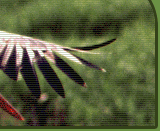| Project Passport | | Project Title | Restoration of Latvian floodplains for EU priority species and habitats | | Project Duration | 2004 - 2008 | | Beneficiary | Latvian Fund for Nature | | Partners | Nature Protection Board, North Vidzeme Biosphere Reserve, Latvian Ornithological Society and local municipalities | | Funding | European Union LIFE-Nature program, UNDP Latvia/GEF, The Ministry of Environment of the Republic of Latvia | | Project Location | 16 territories in all Latvian regions (excluding Riga): Sita and Pededze floodplains, Mugurve meadows, Pededzes lejtece (lower reaches), Dviete floodplains, Burga meadows, Meadows of Seda river (Seda bog), Vidusburtnieks, Rūja floodplains, Lake Burtnieks meadows, Lielupe floodplains, Svete floodplains, Kalnciems meadows, Raķupe meadows, Lake Durbe meadows, Uzava floodplains (upper reaches) | | Project manager | Inga Račinska | | Contact | | Phone | +371 7830999 | | FaX | +371 7830291 | | E-mail | inga@lanet.lv | | Address | Riga, Raiņa Blvd. 31 | | LV-1050, Latvia |   The project includes all the best floodplain meadows from all regions of Latvia, which hold significant nature values and have not been dealt with under other nature conservation projects. All selected sites have outstanding regional, national and international importance. 
Objective For the project, 15 biologically most important floodplain territories are selected, which have not been covered by other habitat restoration and management projects. All these areas are appointed as SPAs and also as pSCIs within Natura 2000 network. Main objectives are: - To restore biologically most important and presently abandoned floodplain areas
- To ensure subsequent continuous management for the benefit of species (e.g., Crex crex, Aquila pomarina, Aquila clanga, Gallinago media, Osmoderma eremita) and habitats (e.g., Fennoscandian wooded meadows 6530, Species-rich Nardus grasslands 6230).
The project conforms to priorities listed in the European Action Plans of Aquila pomarina*, Crex crex* and International Action Plan for Gallinago media. Actions and means involved - Prepare or upgrade nature management plans for the selected sites. Plans will be based on local seminars, public hearings, and existing biological information with only limited site surveys.
- Conduct meadow restoration of most overgrown areas. Methods include shrub removal, destruction of shrub root system, controlled burning, initial mowing and experimental grazing. Obtain numerical data on target species and habitats before and after management in order to identify best methods.
- Exchange information on floodplain meadow management methods. Seminars, visits to different management areas (including other LIFE-Nature projects) and production of best practice management guidelines will be carried out.
- Assist farmers in preparing applications for agro-environmental support to ensure future management of restored floodplain meadows. Local seminars and work with individual landowners will be organized.
Expected results - Viable sites management plans prepared or upgraded for 15 floodplain sites.
- Most urgent restoration measures carried out in 16 areas, covering approximately 2400 ha. This would prevent decline in existing bird populations (current estimate, all areas together: Crex crex* 398-685 pairs, Aquila pomarina* 21-29 pairs, Gallinago media 59-120 pairs) and decrease in existing habitat areas (e.g. 6530* ca 170 ha, 6230* 15 ha).
- The project will provide management planners with better knowledge on how to manage floodplain meadows in order to get wanted results. Risk of making wrong decisions or applying inadequate methods minimized.
- Farmers and landowners will be educated in possibilities and assisted in receiving subsidies for grassland management as foreseen in Rural Development Plan. Continuous management of the restored and other biologically valuable grassland areas will be achieved as follow up of the project.
- Data from this project would significantly help River Basin Authority in formulation of water status objectives of the selected 16 Natura 2000.
You can visit following chapters, linked to the project: 
All the project sites are nominated as Internationally Important Bird Areas in Latvia 
Visit others LIFE-Nature projects publications Back to the top^ |








